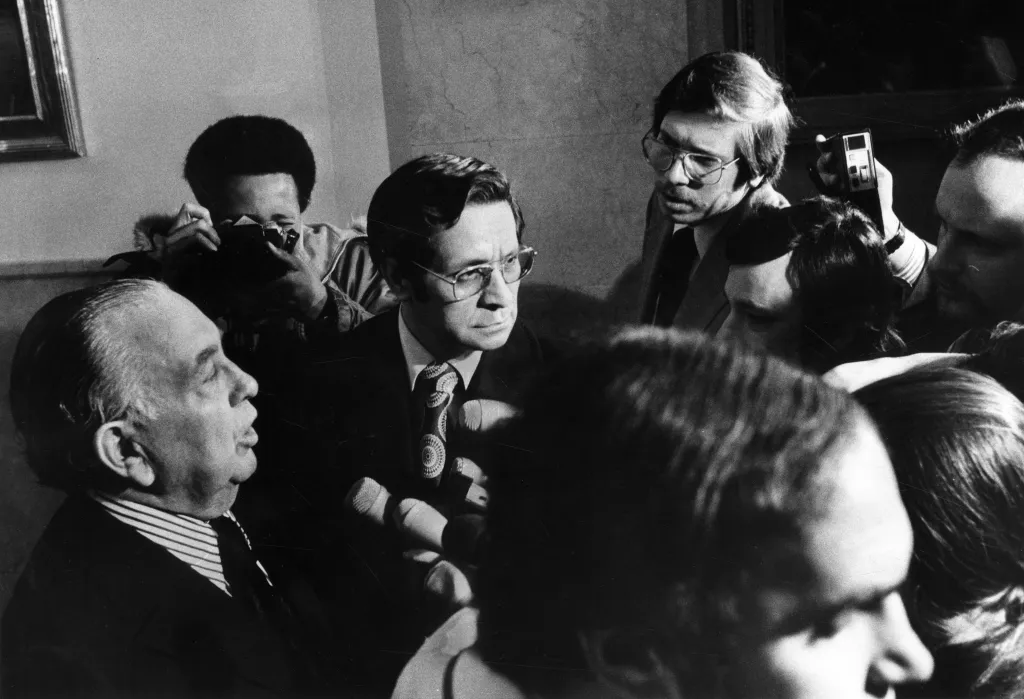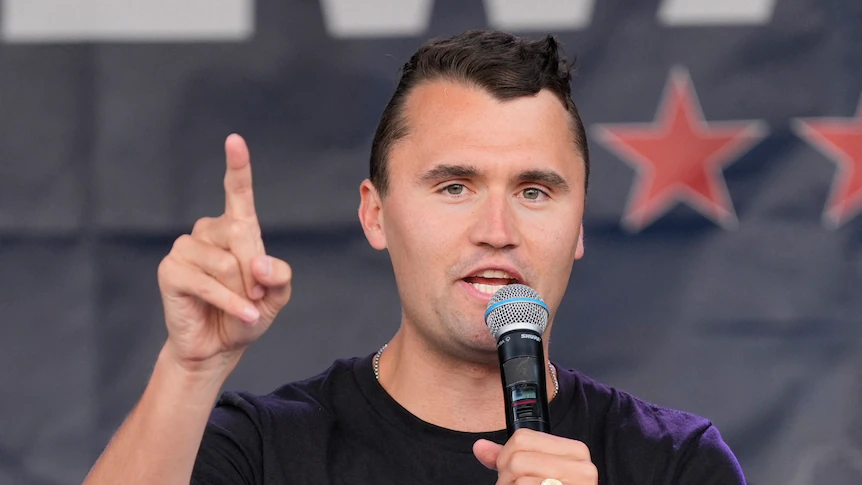
In 1975, the next scheduled reassessment of Illinois’ congressional districts was still five years away. But Chicago Mayor Richard J. Daley didn’t want to wait.
The way the mayor saw it, the existing map was harming his beloved Chicago and keeping his political organization from expanding its influence into the suburbs.
So he had a friendly state legislator propose a new map, years before the next federal census would normally trigger the process.
Chicago’s newspapers rebuked Daley for the power play, and a New York Times story proclaimed his gambit “one of the oldest of political games.”
Currently it’s one of the newest, as political remapping is being weaponized in the cold war between red states (supporting President Donald Trump) and blue states (opposing).
Last month, Texas Democratic legislators temporarily blocked Republican-sponsored efforts to bring about an early reapportionment when they fled to Chicago, denying the GOP a quorum in the legislature.
Gov. Gavin Newsom of California has vowed to neutralize Texas Republicans’ likely gain of several congressional seats by a redistricting of his state favoring Democrats.
Who knows when this tit-for-tat mapmaking will end?
It all makes Daley’s 1975 effort worthy of study by today’s elected officials. The episode was a master class in the potential profit and loss of seeking a quickie redistricting.
A periodic redrawing of election districts is written into the U.S. Constitution, reflecting the sense that democracy works best when voters have an equal share in choosing their representatives.
The problem was that Americans often moved around — unlike Europeans, who tended to be born and die in the same village. In the U.S., some electoral districts saw their population decline, which gave each remaining voter a bigger say in who would govern him. The reverse was true where populations grew.
The Founding Fathers’ solution was a regular census and the periodic redrawing of congressional districts to reflect equal numbers of voters in each.
Illinois’ 1975 dustup wasn’t a proxy battle for the White House or a test drive for presidential candidates. It began because of an impasse that occurred in the wake of the 1970 census, which recorded significant population growth in Chicago and in suburbs north of the city.
Illinois legislators couldn’t agree on how to remap the unbalanced congressional districts that resulted, triggering the appointment of an eight-member redistricting commission, the default procedure in such situations.
Daley thought the redistricting commission’s map was gerrymandered, designed to keep Chicago’s Democrats from getting a foothold in traditionally Republican suburbs.
“The district congressional boundaries we have today are a fiasco, drawn to build a Chinese wall around Chicago,” Daley said.
Daley, famed for malapropisms and other baffling utterances, presumably meant a figurative suburban wall of Republican districts around the city, akin to the Great Wall of China built to keep nomadic tribes out of that country.
“Anybody who thinks he can fight Daley is making a mistake,” a Daley machine insider told the Tribune. “He’s at the absolute zenith of his power and can crush anybody.” On April 1, 1975, Daley had won an unprecedented sixth term in office.
His proposed congressional remap showed Daley was hoping to purge his opponents.
The map would have put the districts of both Abner Mikva, an anti-Daley Democrat, and the progressive Sidney Yates in Evanston, requiring them to compete for the support of their liberal neighbors.
Mikva said he was being punished for not endorsing Daley during the mayor’s last campaign.
The mayor called Mikva “a partisan, narrow-minded bigot who thinks he has a divine right to his congressional seat.”
Mikva responded: “I don’t think I have a divine right to stay in Congress; I just don’t think he (Daley) has a divine pencil.”
Dick Simpson, an independent alderman, backed Mikva, pronouncing Daley’s remap “a Mad Hatter’s mayor’s map, or Partee’s folly.”
Cecil Partee, the Democratic state senator who introduced the remapping plan, was both a reformer and a member of the Daley organization. But others were finding it difficult to straddle that divide.
Ralph Metcalfe, a Black South Side Democrat, had broken with the mayor on the issue of police brutality. Under the new map, his district would be redrawn to give Daley loyalists control.
Those passions made a spectacle of the spring session of the Illinois legislature, which was never known for its dispassionate consideration of bills.
At the Illinois Legislative Correspondents Association’s annual gridiron show, reporters parodied the mutual badmouthing of the officials they covered.
Gov. Dan Walker, a Democrat who’d split with Daley on redistricting, was fair game. One skit was based on the scuttlebutt that Walker hid “patronage workers” on the payrolls of the Department of Transportation and other agencies.
It was performed to the tune of “Ghost Riders in the Sky,” a song recorded by Johnny Cash, Bing Crosby and myriad other performers.
Now, did you hear the DOT
Has workers who, some say,
Don’t do a thing for DOT
But still collect their pay.
They work for Walker here and there
And he doesn’t want it known.
He says his budget bones are bare
But he takes care of his own.
Yippie-i-ooh, Yippie-i-ay,
Ghost workers never die.
Daley was also taking his lumps. Though the Boss was considered a grand master of ward-level politics, his heavy-handedness was alienating downstate Democrats.
Rep. Clyde Choate, D-Anna, told the Tribune he didn’t like a bill written without downstaters’ input.
“If the things I am hearing from my colleagues are true, I am unalterably opposed to the map as introduced in the Senate,” Choate said.
Assistant Majority Leader Terry Bruce, D-Olney, a co-sponsor of the legislation, was similarly disillusioned. He said his name on the bill was “no longer an indication of my position on the bill.”
People could easily see the bill was intended to help Daley’s friends. Among them was Roman Pucinski, who had fallen on his sword for the Boss. After 14 years in the Illinois House of Representatives, Pucinski resigned to make an unsuccessful run against incumbent Sen. Charles Percy in 1972.
Daley was determined to send Pucinski back to Congress. “This would be almost impossible without making Mikva the scapegoat,” Neil Mehler, the Tribune’s political editor, wrote.
That term originates in a custom of the ancient Hebrews, whose High Priest recited a formula that loaded the people’s sins onto a goat that was driven into the wilderness on the day of atonement. To create a congressional district for Pucinski, Daley’s map truncated Mikva’s, with the intention of driving him into the political wilderness.
But Daley’s machinations soon backfired, and Mikva’s career flourished. He served in Congress, was appointed a federal judge and was President Bill Clinton’s White House counsel.
In 1975, the remap bill was entered so late in the legislative session that there wasn’t much time for debate. Tempers flared as Daley’s redistricting bill was registered on the electronic vote board on June 27.
“It is 10 p.m. in the Illinois House. Eugene Schlickman, the Republican from Arlington Heights, is shouting into his microphone, ‘resenting’ Mayor Daley’s reapportionment,” wrote Tribune columnist Rick Soll.
“At the same moment, from the other side of the floor, Gerald Shea, a Democrat from Riverside, is shouting back at Schlickman,” Soll wrote.
The vote was close. Daley supporters were losing by only two votes when Shea — who backed the plan — saw Rep. John Lauer, R-Lincoln, was not on the floor and a colleague was pushing his vote button.
In hopes of keeping the bill alive, Shea objected. Republicans had to frantically phone Lauer, who got there in just time to cast his own vote.
Daley’s bill failed 84-82.
“We just didn’t have the votes,” Shea said. “But there’s always tomorrow.”
Not so much for Daley, though. 1975 was close to his last hurrah.
On Dec. 20, 1976, the last of the big-city bosses had a fatal heart attack in his doctor’s office.
Ron Grossman is a columnist emeritus for the Chicago Tribune. His columns vary from social and political commentary to chapters in Chicago history. Before turning to journalism, Grossman was a history professor. He is the author of “Guide to Chicago Neighborhoods.”



